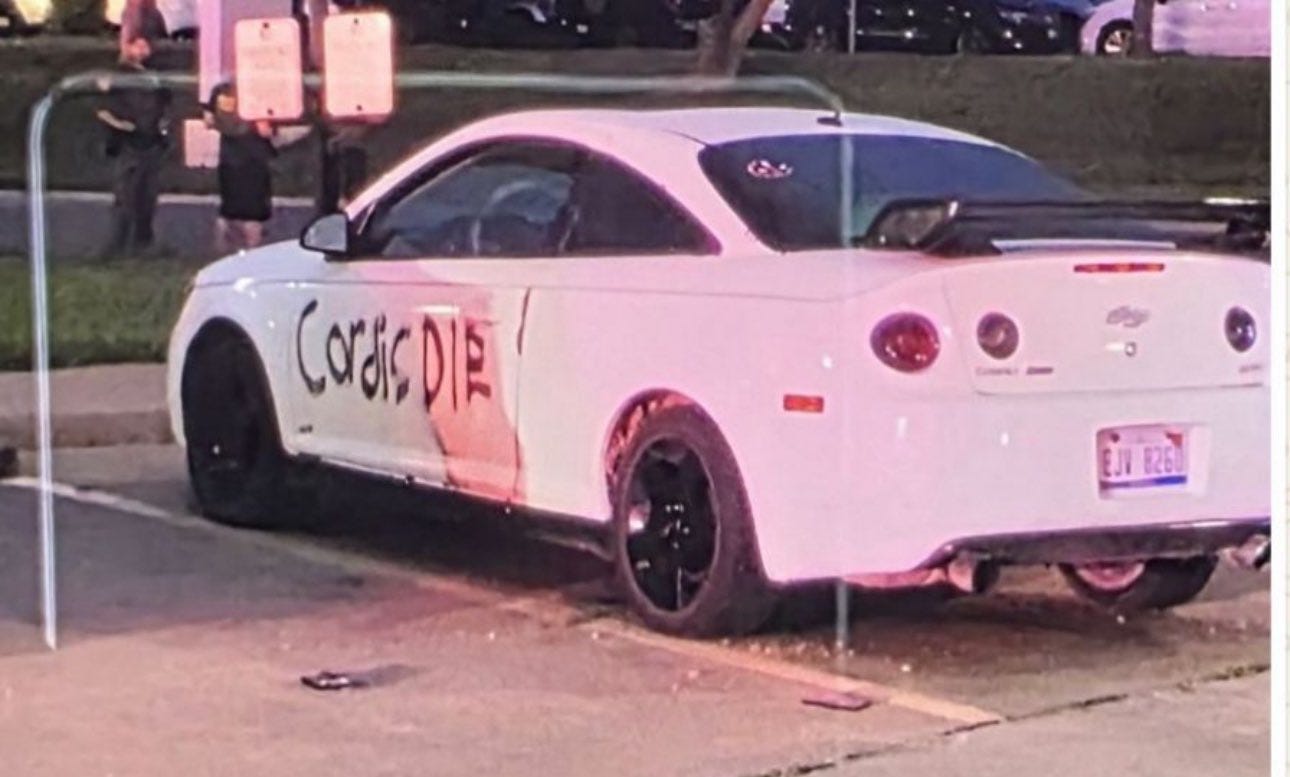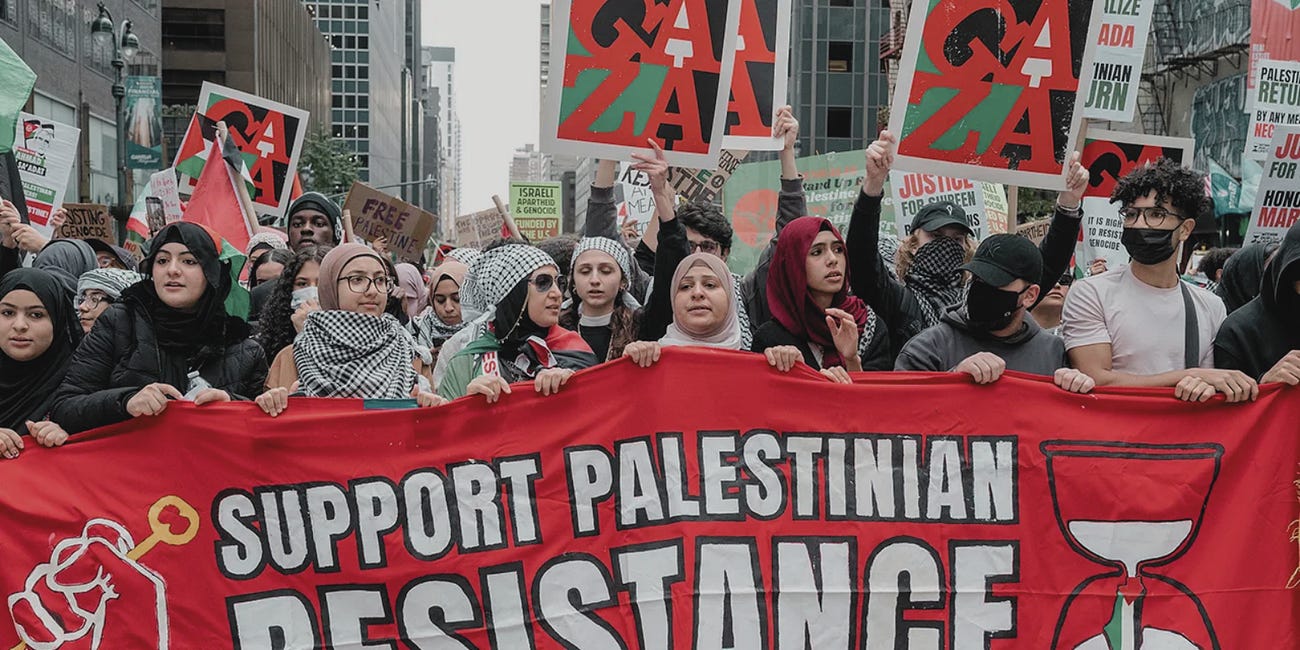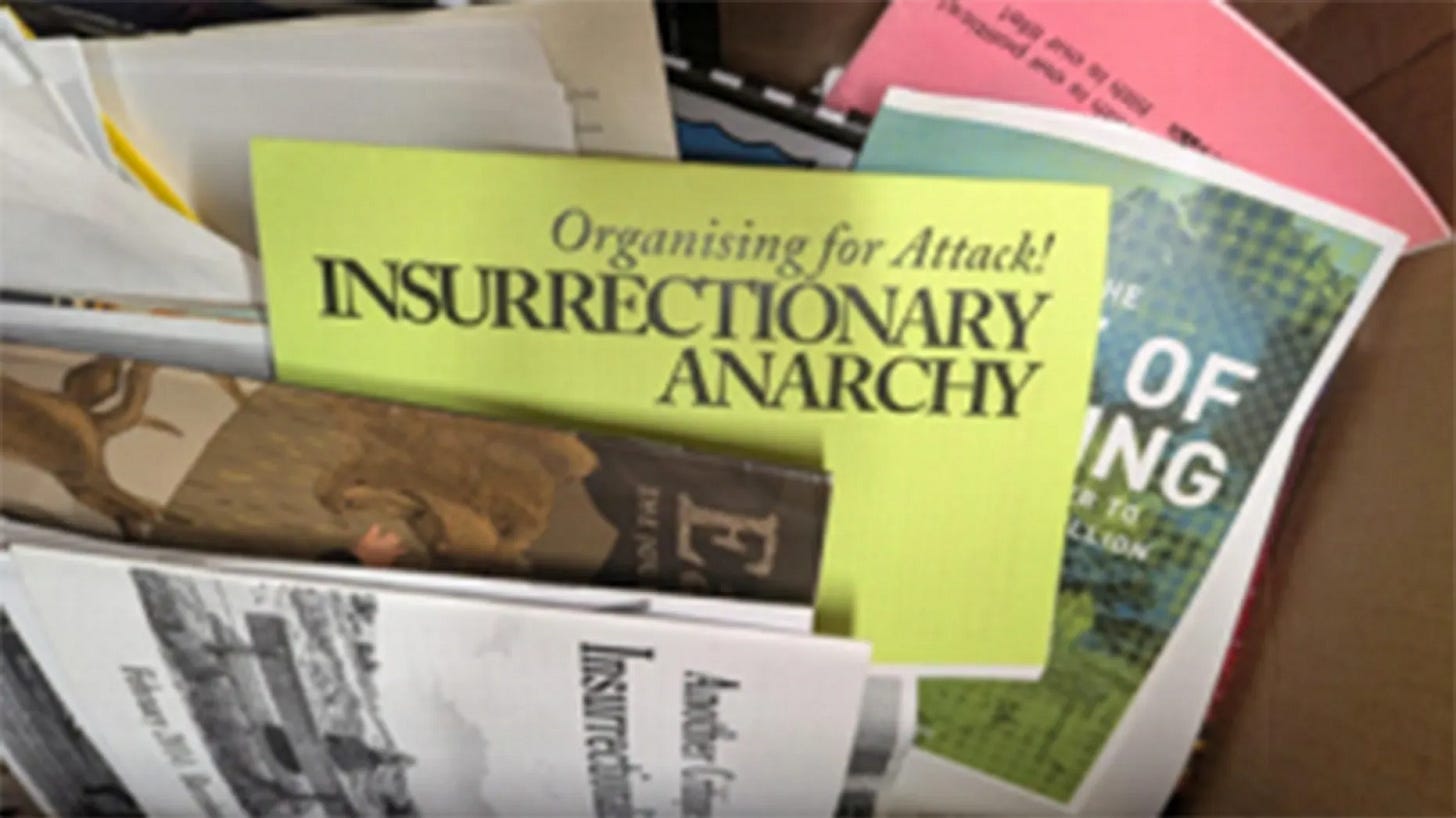Anti-ICE Violence Has Evolved into Organized Domestic Terrorism
From Molotov cocktails to military-style ambushes, anti-ICE hostility is escalating, fueled by leftist rhetoric and ignored by media elites.
This is my third article exposing the Left’s escalating violence against immigration enforcement. To understand the full pattern, read all my political violence coverage here.
Paying subscribers get early access, with this piece available to all in 5 days. If you value this time-intensive reporting, become a paying supporter for early access and full archives. Share this and demand answers!
At 10:37 PM on July 4th, 2025, as most Americans were wrapping up Independence Day celebrations, eleven individuals dressed in black military-style clothing launched what federal authorities are calling a "planned ambush" on the Prairieland ICE Detention Center in Alvarado, Texas. Armed with AR-style rifles, body armor, two-way radios, and Faraday bags to block electronic tracking, they used fireworks as bait to lure ICE agents outside before opening fire.
An Alvarado police officer responding to the scene was shot in the neck. He survived, but barely.
The attackers left behind a calling card that should concern anyone paying attention to America's escalating political violence: flyers declaring "FIGHT ICE TERROR WITH CLASS WAR!" and "FREE ALL POLITICAL PRISONERS," along with a flag reading "RESIST FACISM – FIGHT OLIGARCHY." Graffiti scrawled across the facility included "Ice pig" and "traitor": language that treats immigration enforcement officers as legitimate targets for violence.
Ten of the eleven suspects were arrested and charged with terrorism, attempted murder of federal officers, and aggravated assault with a deadly weapon. One remains at large.
Three days later and 350 miles south, 27-year-old Ryan Luis Mosqueda opened fire on Border Patrol agents with an assault rifle outside their McAllen facility, injuring a police officer before being killed by federal agents. His vehicle bore the spray-painted message "Cordis Die": a reference to a fictional anti-establishment movement from the video game "Call of Duty: Black Ops II."
If you missed these stories, you're not alone. Despite involving coordinated attacks on federal law enforcement using military tactics and equipment, they received minimal coverage from major news outlets. No prime-time specials. No expert panels discussing the threat to democratic institutions. No op-eds warning about domestic terrorism.
Yet imagine for a moment if eleven individuals in tactical gear had launched a coordinated assault on a federal facility while shouting white supremacist slogans. The story would have dominated news cycles for weeks, and rightfully so. The disparity in coverage reveals something uncomfortable about how we process political violence in America—and who we consider capable of terrorism.
The Evolution from Protest to Warfare
The Alvarado attack represents an escalation in anti-ICE violence that should alarm anyone concerned about political stability. This wasn't a spontaneous confrontation or a protest that got out of hand. Federal investigators found evidence of extensive premeditation: coordinated gear, communication equipment, tactical planning, and sophisticated operational security measures.
According to the criminal complaint, authorities discovered "12 sets of body armor, flyers, spray paint and a flag saying 'Resist Fascism. Fight Oligarchy'" along with "masks, goggles, gloves, weapons, fireworks and more." The attackers used fireworks as a diversionary tactic (a technique borrowed from urban warfare) to draw unarmed ICE officers into a kill zone.
This level of coordination and equipment represents a fundamental shift from previous anti-ICE incidents. We've moved from angry protesters throwing rocks to organized cells conducting military-style operations against federal facilities.
The timeline of escalation tells a disturbing story:
June 7, 2025: Over 1,000 rioters in Los Angeles attacked ICE officers during raids, throwing rocks and using Molotov cocktails, with Emiliano Garduno-Galvez later charged with attempted murder.
June 10, 2025: Emiliano Garduno-Galvez, an illegal alien in Los Angeles hurled a Molotov cocktail at ICE officers, escalating to targeted lethal attacks.
July 4, 2025: Eleven attackers ambushed the Prairieland ICE facility in Alvarado, Texas, in the most sophisticated assault yet.
July 7, 2025: Ryan Luis Mosqueda shot at Border Patrol agents in McAllen, Texas, while Eric Anthony Rodriguez attempted a separate Molotov cocktail attack on ICE and CBP officers, marking a violent surge across multiple locations.
Each incident represents increased sophistication, violence, and coordination. This isn't random violence—it's an escalating campaign against immigration enforcement that's beginning to resemble insurgency tactics.
ICYMI
Is America's Left Developing an 'Assassin Culture'?
Paid subscribers get this full article now—it will be free to everyone in a week! Upgrade for early access and exclusive goodies.
The Organizational Infrastructure Behind the Violence
Recent arrests have exposed the organizational networks supporting these attacks. When four individuals were arrested for spiking a Border Patrol vehicle's tire in Van Nuys, California, they were caught with a tote bag bearing the logo of the Coalition for Humane Immigrant Rights (CHIRLA), a taxpayer-funded organization now under congressional investigation for its role in coordinating anti-ICE activities.
CHIRLA received nearly $1 million in federal grants from the Biden administration, raising serious questions about whether taxpayer dollars funded activities that led to violence against federal agents. The House Judiciary Committee is investigating whether CHIRLA used federal funds to support the violent criminal activity that has repeatedly targeted immigration enforcement.
This isn't just about one organization, it reveals the infrastructure supporting anti-ICE violence. These attacks aren't happening in isolation; they're being coordinated, funded, and logistically supported by groups that present themselves as humanitarian organizations while encouraging violence against federal agents.
The McAllen Incident: When "Motive Unknown" Becomes Willful Blindness
While authorities claim Ryan Mosqueda's motive remains "unknown," the context makes political motivation nearly impossible to ignore. The attack occurred during a surge in anti-ICE violence, targeted Border Patrol agents specifically, and followed a pattern of escalating hostility toward immigration enforcement.
Mosqueda's vehicle bore Michigan license plates and was spray-painted with "Cordis Die," a reference to a fictional populist movement from the video game "Call of Duty: Black Ops II." While some might dismiss this as evidence of mental instability rather than political motivation, the distinction becomes meaningless when the result is the same: federal agents under fire.
Mosqueda was reported missing from Weslaco, Texas, at 3:48 a.m. that day, and his father claimed he had a mental deficiency, though no documentation was provided. Even if mental health issues played a role, they don't explain why he specifically targeted Border Patrol agents rather than any other government facility or random target.
The insistence on treating this as an isolated incident with "unknown" motives is simply another example of a broader pattern of authorities and media downplaying anti-ICE violence. When you're experiencing a documented surge in attacks against immigration enforcement, and someone specifically targets Border Patrol agents with an assault rifle, calling the motive "unknown" starts to look like willful blindness.
The Normalization of Anti-ICE Violence
The Alvarado and McAllen attacks didn't occur in a vacuum. They represent the logical conclusion of years of rhetoric that has dehumanized immigration enforcement officers and normalized violence against them.
DHS reported a 700% increase in assaults against ICE officials, highlighting a significant rise in threats to immigration enforcement agencies. This isn't happening by accident—it's the predictable result of sustained demonization campaigns against ICE and Border Patrol.
Consider the escalating rhetoric from Democratic officials:
Minnesota Governor Tim Walz called ICE Trump's "modern-day Gestapo" in a May commencement speech. Far-left Rep. Pramila Jayapal called ICE a "terrorist force" in a recent appearance with Joy Reid said she finds it "inspiring" when people break the law to disrupt ICE operations. Rep. Alexandria Ocasio-Cortez has repeatedly compared immigration enforcement to "concentration camps" and Nazi tactics. Bernie Sanders has made demands to stop ICE "as soon as possible."
The fascism rhetoric has become so normalized among progressive Democrats that comparing Trump's immigration policies to Hitler's regime is now considered mainstream political discourse. When you tell your supporters that ICE agents are operating "concentration camps" and conducting operations reminiscent of Nazi Germany, you're not engaging in hyperbolic political rhetoric—you're providing moral justification for violence against people you've characterized as fascist oppressors.
Acting ICE director Todd Lyons recently reminded Rep. Jayapal that "An actual Antifa terrorist tried to blow up ICE's Northwest Processing Center in Rep. Jayapal's home state of Washington in 2019. At the time, she tried to blame the violent attack on rhetoric from the right, in defense of an actual terrorist who tried to murder detainees and employees alike!"
Call me crazy but a pattern is becoming clear. Democratic officials demonize ICE, violence against ICE increases, and then those same officials either remain silent or blame their political opponents when attacks occur.
The Deafening Democratic Silence
Perhaps most damning is what Democrats haven't said about these attacks. The offices of Senate Minority Leader Chuck Schumer, House Minority Leader Hakeem Jeffries, and Democratic Whip Katherine Clark all failed to respond to requests for comment about condemning the attacks. Governor Walz, who compared ICE to the Gestapo, has been equally silent.
This silence isn't neutral—it's complicity. I would even argue is permission by omission. When you spend months or years demonizing the president, a federal law enforcement agency, and then that agency comes under coordinated attack, refusing to condemn the violence sends a clear message about whose side you're on.
The contrast with how Democrats respond to right-wing violence is instructive. When violence erupts from conservative groups, Democratic leaders race to microphones to condemn it in the strongest possible terms. They demand congressional hearings, call for investigations, and use the incidents to justify broader policy changes.
But when eleven people launch a coordinated assault on a federal facility using military equipment while shouting anti-ICE slogans? Crickets.
When Rep. Alexandria Ocasio-Cortez was questioned by Fox News about whether Democrats' inflammatory rhetoric against Elon Musk had any connection to violent attacks against Tesla owners and dealerships, her response was telling: "Yeah, I mean, again, I've seen Republicans call me communist and that I hate this country," before trailing off. Rather than condemning violence, she deflected and played victim.
The Democrats are a party incapable of leadership and instead choose cowardice and capitulation to the worst in their party.
ICYMI
From "Words Are Violence" to Actual Violence: The Anti-Semitic Terror Campaign Disguised as "Resistance"
Paid subscribers get this full article now—it will be free to everyone in a week! Upgrade for early access and exclusive goodies.
The Axios Revelation: Violence Advocacy Goes Mainstream
The most disturbing aspect of this escalating violence isn't that it's happening—it's who's demanding more of it. An Axios report revealed that Democratic constituents, particularly white, well-educated individuals from upscale areas, are urging lawmakers to adopt extreme measures, including being willing to "get shot," to oppose the Trump administration.
"Our own base is telling us that what we're doing is not good enough," one House Democrat told Axios, "[That] there needs to be blood to grab the attention of the press and the public."
Another House Democrat said constituents were calling for "violence…to fight to protect our democracy," while a third reported that "Some of them have suggested … what we really need to do is be willing to get shot" when visiting ICE facilities or other government buildings.
This is no longer coming from the political fringe anymore. "What I have seen is a demand that we get ourselves arrested intentionally or allow ourselves to be victims of violence, and … a lot of times that's coming from economically very secure white people," said another House Democrat.
Think about what this means: college-educated professionals—doctors, lawyers, professors, business executives—are explicitly advocating for political violence. These aren't basement-dwelling extremists or unemployed radicals. These are people who move through respectable society while demanding that their representatives engage in or submit to violence for political purposes.
This represents a fundamental shift in American political culture. Historically, advocacy for political violence came from society's margins. Now it's coming from people with advanced degrees and comfortable suburban lives. When violence advocacy goes mainstream among the educated professional class, we're approaching a very dangerous threshold.
The Media's Selective Blindness
The coverage disparity between the ICE facility attacks and comparable right-wing violence exposes the media's role in normalizing left-wing political violence. Major outlets that would spend weeks analyzing a coordinated attack by white supremacists barely mentioned the Alvarado assault.
As Beth Brelje of The Federalist wrote, investigators found members of the group with printed fliers that included messages such as "Organising for Attack! INSURRECTIONARY ANARCHY," yet "accomplice media outlets initially buried the story of what appears to be an actual insurrection at the Prairieland facility."
The contrast is striking. When right-wing groups engage in political violence, media coverage focuses on the threat to democracy, the need for accountability, and the dangers of extremist rhetoric. When left-wing groups attack federal facilities with military equipment, the story gets buried on inside pages or ignored entirely.
This isn't accidental editorial judgment—it's ideological bias that treats certain forms of political violence as more newsworthy than others. When media outlets consistently downplay violence from groups they sympathize with while amplifying violence from groups they oppose, they become propaganda rather than journalism.
The result is a distorted public understanding of political violence in America. Most Americans have no idea that coordinated attacks on federal facilities are occurring because their news sources aren't telling them.
The Antifa Question Revisited
The Alvarado attack's sophistication and ideology remind me of the debates about Antifa's role in 2020's violent riots. While Democratic officials consistently downplayed Antifa's organizational capacity and influence, evidence suggested otherwise.
The attackers in Alvarado left behind flyers with slogans such as "FIGHT ICE TERROR WITH CLASS WAR!" and "FREE ALL POLITICAL PRISONERS," along with a flag stating "RESIST FACISM – FIGHT OLIGARCHY": language closely associated with anti-fascist ideologies. The coordination, equipment, and tactical approach mirror the organizational capabilities that many conservatives attributed to Antifa during 2020.
Remember Jerry Nadler's dismissive response when asked about Antifa in 2020? He called it merely a "myth" rather than coordinated violence. Yet the Alvarado attack demonstrates exactly the kind of organized, coordinated, ideologically-motivated violence that critics warned Antifa represented.
The evidence suggests that far from being just an "idea," anti-fascist and related leftist groups have developed significant organizational capacity for political violence. They can coordinate multi-person operations, acquire military equipment, plan complex attacks, and execute them with tactical precision.
This evolution should concern anyone interested in political stability. When ideological movements develop military capabilities and begin targeting federal facilities, they're no longer protest movements: they're insurgencies.
Looking Forward: The Trajectory of Escalation
A pattern is emerging and I suspect we're witnessing just the start of a sustained campaign against immigration enforcement. Look at the escalation over the last month:
June 7-20: Multiple Molotov cocktail attacks, mass confrontations, and threats against immigration enforcement.
July 4: Coordinated military-style assault with sophisticated equipment
July 7: Simultaneous attacks in multiple locations targeting different agencies
The trajectory points toward increased lethality, better coordination, and more sophisticated tactics. When activist like ANTIFA begin targeting ICE officers for assassination, and when taxpayer-funded advocacy groups are found providing material support to attackers, we're no longer dealing with spontaneous protests: we're witnessing organized domestic terrorism.
The 2025 DHS assessment warns that "domestic and foreign violent extremist actors, the harmful effects of illegal drugs, and adversarial states seeking to exacerbate our divisions as well as silence criticism from diaspora communities will pose a threat to public safety and security in the Homeland." The ICE facility attacks fit precisely into this threat environment.
The question isn't whether more attacks will occur—it's whether they'll escalate further. Given the rhetorical environment, the lack of condemnation from Democratic leaders, and the media's selective blindness, there's little reason to expect de-escalation.
The Broader Context: Normalizing Political Violence
The attacks on ICE facilities don't stand alone: they're part of a broader pattern of left-wing political violence that included attacks on Tesla showrooms earlier in the year, part of the anti-corporate sentiments often associated with progressive activism, campus antisemitism targeting Jewish students, and harassment campaigns against conservative figures.
What connects these incidents isn't just ideology: it's the normalization of violence as a legitimate political tactic. When educated professionals advocate for violence, when media outlets downplay attacks that don't fit their narrative, and when political leaders refuse to condemn violence by their ideological allies, violence becomes normalized.
It is my opinion that the Alvarado attack represents a significant escalation: the point at which anti-ICE rhetoric translated into organized, military-style violence against federal facilities. Unless there's a dramatic change in how political and media elites respond to left-wing violence, this won't be the last such attack: it will be the template for future ones.
Conclusion
America faces a choice about political violence. We can maintain consistent standards that condemn all political violence regardless of ideology, or we can continue down a path where violence becomes acceptable based on political alignment.
The ICE facility attacks are testing the commitment of the Democrats, the Left, and legacy media to those principles, and they are failing. If coordinated assaults on federal facilities using military equipment don't merit widespread condemnation and serious media coverage, then we've essentially declared that certain forms of political violence are acceptable.
That's a dangerous precedent in a country with more than 400 million civilian-owned firearms and deep political divisions. Once violence becomes normalized for one side, it tends to become normalized for all sides.
The attacks in Alvarado, McAllen, and Los Angeles weren't isolated incidents—they were warnings. How we respond will determine whether they remain exceptions or become the new normal in American political life.









